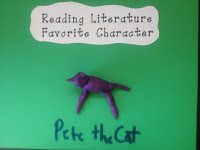Erikson viewed the elementary school years as critical for the development of self-confidence. Ideally, elementary school provides many opportunities to achieve the recognition of teachers, parents and peers by producing things—drawing pictures, solving addition problems, writing sentences, and so on. If children are encouraged to make and do things and are then praised for their accomplishments, they begin to demonstrate industry by being diligent, persevering at tasks until completed, and putting work before pleasure. (Wikipedia.org)
It’s interesting to me (after being at this rodeo for many years) that I see similar concepts in the “executive function.” Children need the opportunity to start and complete a task and they need to develop delayed gratification. Concrete challenges where they can express themselves and develop mastery will encourage this.
All of the above help justify the need for art and creative activities in the elementary classroom. Let’s look beyond a computer assessment and paper and pencil test to let children SHOW WHAT YOU KNOW!
Puppets (stick, paper bag, paper plate, sock, coat hanger, envelope)
Provide children with the materials to make puppets of their favorite character from a story. They could also make a puppet of animals studied, famous historical figures, and so forth. The puppet will give them a fun way to share information with classmates.
Sculpture (mold with clay or play dough)
Children can make something that they learned from reading a book, watching a video, etc.
Create a Board Game
Challenge children to make a game to review information from a unit of study. They could do this independently or with a partner.
Poster, Collage, or Mural
Divide children into small groups and let them create a visual about what they’ve learned.
Mini Museum
Children take a shoebox and make a small “museum” with a collection of objects (found or made) that represent what they’ve learned.
Challenge children to make a game to review information from a unit of study. They could do this independently or with a partner.
Poster, Collage, or Mural
Divide children into small groups and let them create a visual about what they’ve learned.
Mini Museum
Children take a shoebox and make a small “museum” with a collection of objects (found or made) that represent what they’ve learned.







